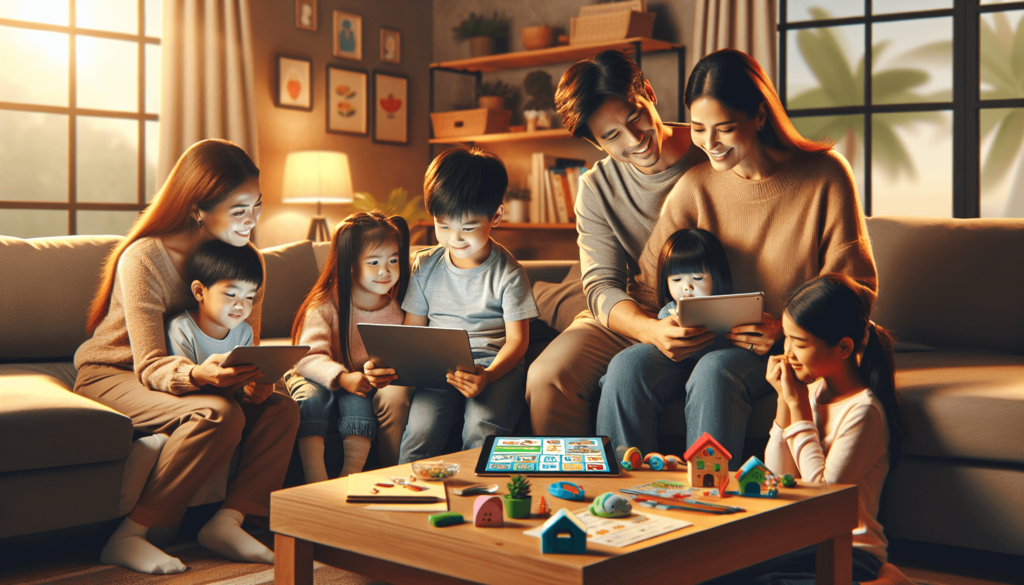“`html
Effective Screen Time Strategies for Young Children: Research Insights
Guiding children through the digital world is a challenge modern parents face daily. The pressure to find a balance between beneficial screen use and excessive exposure is immense. With this in mind, a recent review of over 100 studies sheds light on the optimal strategies for young children’s screen time. Here, we distill these findings into actionable advice for parents and guardians.
Understanding the Impact of Screen Time on Young Minds
Technology and screen-based activities are integral parts of our daily lives. For young children, screens can be both educational and entertaining. However, excessive screen time has raised concerns among parents and educators.
Research consistently shows that too much screen time can:
- Lead to reduced physical activity
- Cause sleep disturbances
- Correlate with lower academic performance
- Impact social skills development
To navigate these challenges, experts have outlined four effective strategies to help children use screens well.
1. Set Clear Boundaries and Guidelines
Creating firm rules around screen time can help manage your child’s usage effectively. Consider the following:
Set Time Limits
- For children aged 2 to 5, limit screen time to one hour per day of high-quality programming.
- Ensure that screen time does not replace essential activities such as sleeping, playing, or reading.
Designate Screen-Free Zones
- Establish screen-free areas in the home, such as bedrooms and dining areas, to encourage tech-free interactions and better sleep habits.
2. Encourage Engaged Viewing
Passive screen time often leads to the issues mentioned above. Instead, encourage interactive and educational screen use:
Select High-Quality Content
- Choose age-appropriate, educational programs and apps that promote learning and creativity.
- Use resources like Common Sense Media to research suitable content that aligns with your child’s development stage.
Co-View and Discuss
- Whenever possible, watch programs together and engage with your child by asking questions and discussing the content.
- This not only aids comprehension but also models critical thinking and appropriate screen use.
3. Balance Screen Time with Physical Activity
To maintain a healthy lifestyle, ensure that your child’s screen time is balanced with physical activity. Here’s how:
Incorporate Physical Play
- Encourage at least one hour of physical play each day, which can range from outdoor sports to indoor dancing sessions.
Use Screens as a Gateway to Physical Activities
- Leverage technology to promote physical engagement, such as interactive games that require movement or following exercise videos together.
4. Foster Social Connections
In the digital age, screens can both hinder and enhance social interactions. It’s crucial to strike the right balance.
Promote Face-to-Face Interaction
- Encourage playdates and physical activities with peers to build social skills and emotional intelligence.
Use Video Calls for Remote Socializing
- When in-person interactions are not possible, use video calling platforms to help maintain connections with family and friends.
Implementing These Strategies: A Balanced Approach
While these strategies offer a comprehensive approach, they work best when tailored to your child’s unique needs and lifestyle. Here are a few additional tips to aid implementation:
Model Good Behavior
- Children learn by imitation. Model proper screen use by limiting your own screen time and engaging in non-digital activities.
Stay Informed
- Keep yourself updated on the latest research and guidelines to make informed decisions regarding digital media.
Be Flexible
- Acknowledge that perfect adherence to screen time rules is challenging. Aim for consistency rather than perfection, and be prepared to adjust as your child grows.
Conclusion: Navigating the Digital Landscape
The balance of technology and traditional activities is essential for the healthy development of young children. By **setting clear boundaries**, **encouraging engaged viewing**, **balancing screen time with physical activity**, and **fostering social connections**, parents can help their children navigate the digital landscape effectively.
Remember, the goal is to integrate screens into your children’s lives in a way that enriches, rather than detracts from their overall well-being. Through mindful, informed, and proactive strategies, you can ensure that screen time serves as a positive, developmental tool in your child’s life.
Stay tuned for more insightful articles that help you navigate the myriad aspects of raising well-rounded kids in a digital age. If you found this article helpful, please share it with other parents who might benefit from these strategies.
“`




